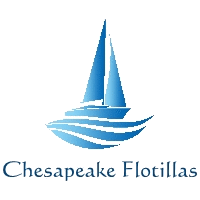Coastal Navigation
Prerequisites: None
General Description: Able to demonstrate the navigational
theory required
to safely navigate a sailing vessel in coastal or inland waters. There
is no on-water part to this course.
SAILING KNOWLEDGE
A trained navigator will have successfully demonstrated his or her
ability to:
- Explain the chart symbols and conventions on U.S. nautical charts
in accordance with the terminology of chart #1.
- Identify a source of official U.S. Coast Guard navigation
publications.
- List the publications required for prudent navigation in the
local area including the following ASA minimum requirements:
- Large scale charts of the area and chart #1
- Federal Requirements for Recreational Boats
- USCG Navigation Rules
- State small vessel regulations
- Local rules and regulations, if applicable
- Local sailing directions
- Tide and current tables, if applicable
- List of lights, buoys, and fog signals
- Radio aids to navigation (if using radio or RDF)
- List the instruments required for prudent navigation in the local
area including the following minimum requirements:
- Steering compass and deviation table
- Handbearing compass and / or pelorus
- Binoculars
- Protractor or parallel rule
- Depth sounder or leadline
- Pencil, eraser, and notebook
- Dividers
- Watch or clock
- Log / Knotmeter
- Describe the purpose of "Notice to Mariners."
- Use the tide and current tables to find:
- Times and heights of tides at reference and secondary ports.
- Direction and rate of current at referenced and secondary
stations.
- Convert courses and bearings between true, magnetic, and compass.
- Check compass deviation by means such as a transit bearing.
- Plot a dead reckoning position on a chart using speed, time and
course to steer.
- Allow for the effect of current and leeway to plot the estimated
position.
- Determine a course to steer which takes into account known
current and leeway.
- Determine current given the course steered and speed and two
observed positions.
- Plot a chart position from terrestrial objects using:
- Two or more bearings on different objects taken at one time.
- Bearings at different times (i.e. a running fix).
- One bearing and transit range.
- One distance (i.e. a sounding or dipping a light) and one
bearing.
- Use the above techniques to chart a course of at least 20 miles
and 3 course changes.
- Explain the terms and characteristics used for lighted navigation
aids.
- Explain the significance of shapes, colors, and lights used in
the buoyage system.
The tuition for this course is $100 per person with a minimum of 12 students and a maximum of 20. Practice charts
and other printed material required for the class are provided. Students must provide their own navigation tools
(i.e., parallel rules, dividers, scratch paper, pencil, eraser, and optional calculator). A group discount is available.
Contact Capt. Rob to
schedule training for you and your crew. Availability is limited!

